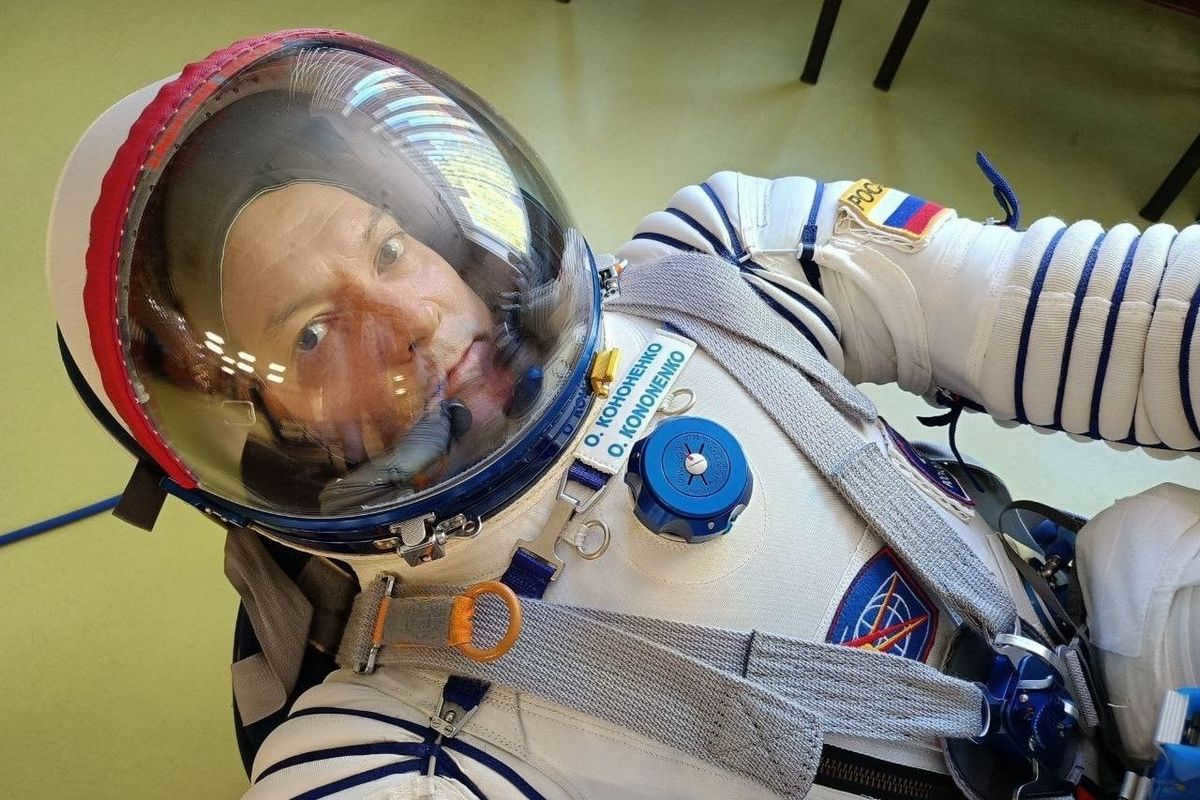
Oleg Kononenko, who has strong ties to Samara, is celebrating his 59th birthday on June 21. Let’s delve into the biography of Oleg Kononenko and highlight his notable achievements.
Biography of astronaut Oleg Kononenko
Oleg Kononenko was born on June 21, 1964 in the city of Chardzhou, Turkmenistan (now Turkmenabad). He completed his education there and then spent a year working as a kit man at the aviation technical base of the Chardzhou United Aviation Detachment.
In 1988, Kononenko graduated from the Zhukovsky Kharkov Aviation Institute, specializing in aircraft engineering with a focus on aircraft engines. After graduating, he joined CSKB in Kuibyshev, where he started as an engineer and eventually rose to the position of a leading design engineer. His work primarily involved designing electrical systems for spacecraft.
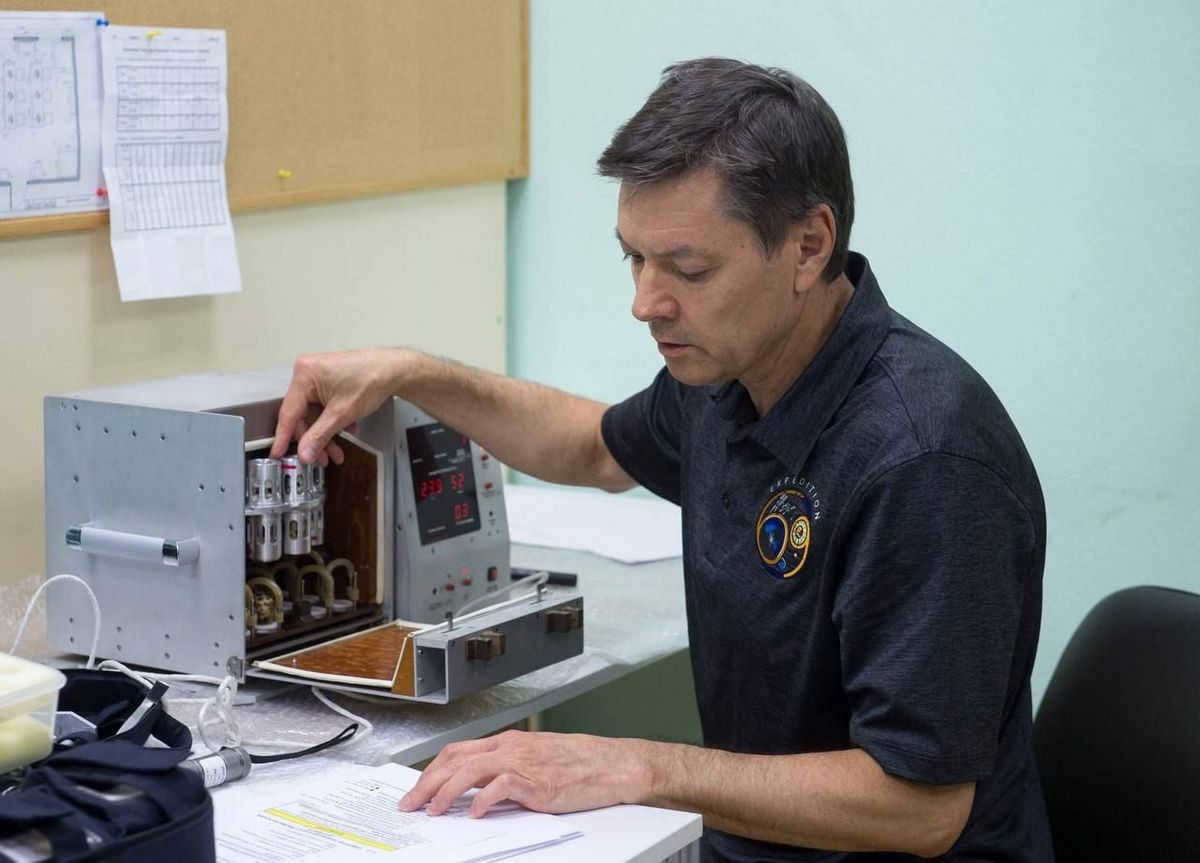
Oleg Kononenko was born in Korolev, the city where he later began his career as a cosmonaut. In 1996, he joined the cosmonaut squad of RSC Energia after successfully passing the selection process. From 1996 to 1998, Kononenko underwent intensive space training at the Gagarin Cosmonaut Training Center. After completing his training and passing all the necessary exams, he officially became a test cosmonaut and joined the cosmonaut squadron.
Kononenko embarked on his inaugural space journey on April 8, 2008, serving as a flight engineer aboard the Soyuz TMA-12 spacecraft. Joining him were expedition commander Sergei Volkov (also embarking on his maiden voyage) and researcher Lee So-yeon. Shortly after, the spacecraft successfully docked with the International Space Station. Throughout the six-month expedition, Kononenko ventured into outer space two times.


Following that, he was given the opportunity to join the expedition to the ISS on three more occasions – in 2011, 2015, and 2017.
In one of his interviews, the astronaut confessed that his biggest desire after landing is to take a refreshing shower.
Currently, Oleg Dmitrievich holds the position of commander in the astronaut team at Roscosmos and simultaneously serves as the deputy head of the Cosmonaut Training Center in Moscow.
Oleg Kononenko and Samara
Oleg Kononenko is the recipient of numerous accolades, including the prestigious “For Merit to the Samara Region” and “For Labor for the benefit of the land of Samara” awards.
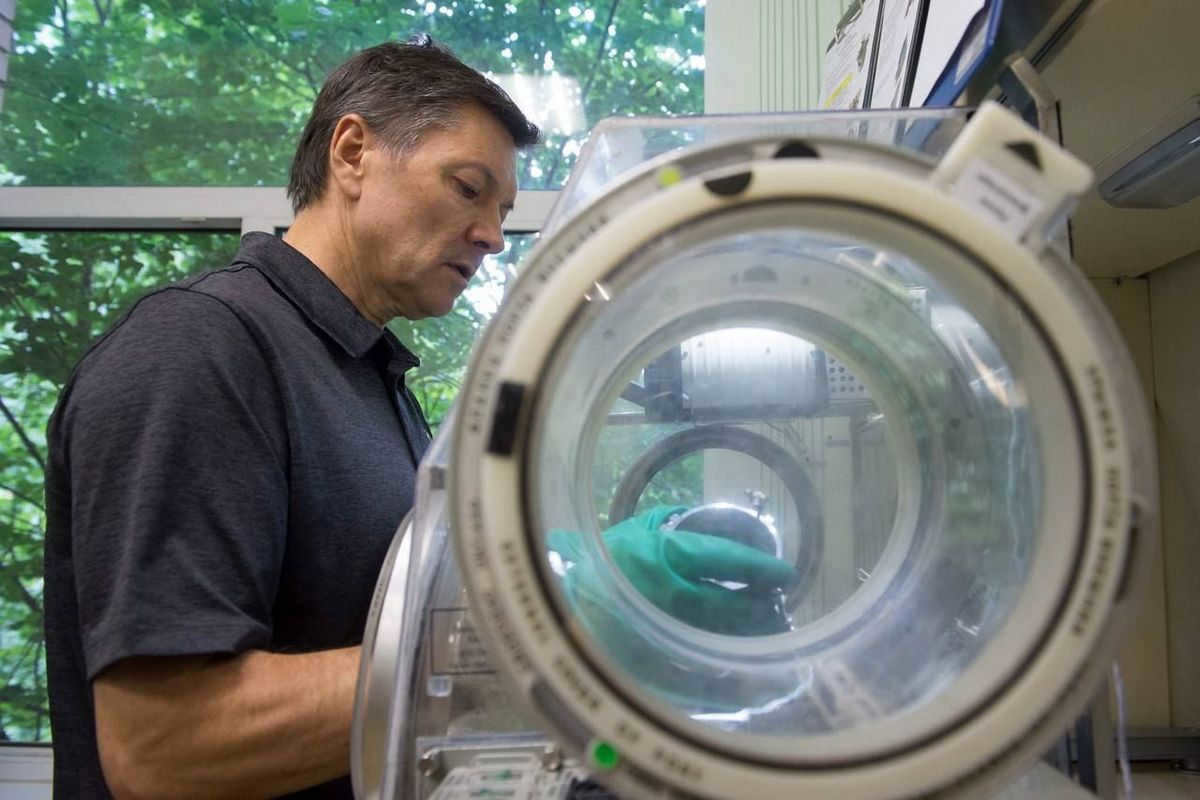

The astronaut actively engages in the community activities of the capital city of the 63rd region. For example, in 2018, he, in his capacity as a Samara ambassador, along with Governor Dmitry Azarov, inaugurated the Fan Wall on the eve of the FIFA World Cup.
Kononenko has frequently taken part in sporting events in Samara either in person or through video messages.
The people of Samara also hold a great affection for Oleg Dmitrievich and on Cosmonautics Day, they record heartfelt congratulations for him.
The cosmonaut, Tatiana Yurieva’s spouse, is a design engineer by profession. They first crossed paths during their time at the Kharkiv Aviation Institute. The couple is currently raising twins named Andrei and Alice.
Further Reading
Please note that this website is intended for individuals aged 18 and above.
This website is registered with Roskomnadzor and holds certificate El No. FS77-80505, issued on March 15, 2021.
Editor-in-Chief: Olesya Vyacheslavovna Nosova.
Website Editor-in-Chief: Viktor Kanskiy.
The author responsible for the updated version of this publication is Vladimir Nikolaevich Sungorkin.
Readers’ messages and comments on the website are published as is, without any prior editing. The editorial team retains the right to delete or modify them if they constitute an abuse of freedom of information or a violation of legal requirements.
EDITORIAL ADDRESS: Samara branch of ZAO “Komsomolskaya Pravda” Publishing House. Lesnaya Street, 9, Samara, 443100 Contact tel. +7 (846) 270-69-10. Email [email protected]
The exclusive rights to the content posted on the website www.kp.ru, as per the laws of the Russian Federation on intellectual property protection, belong to JSC “Publishing House “Komsomolskaya Pravda” and may not be used by others in any form without the written permission of the copyright holder.
To acquire copyright and get in touch with the editorial board, please email [email protected].
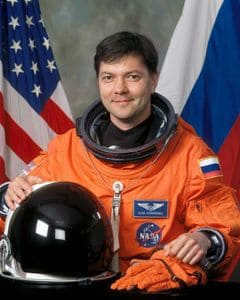 Oleg Dmitrievich Kononenko (1964-).
Oleg Dmitrievich Kononenko (1964-).
A Short Biography:
Russian Cosmonaut: No. 102;
Cosmonaut from around the globe: №473;
Number of space missions: 1;
Spacewalks performed: 2;
Total duration in space: 198 days 16 hours 20 minutes 11 seconds;
Oleg Kononenko – the 102nd Russian astronaut and a Hero of Russia: his life story with pictures, personal life, space missions, first trip to the International Space Station (ISS), and the Columbia space shuttle.
Oleg Kononenko – the 102nd astronaut from Russia and the 473rd astronaut from all over the world.
Oleg Kononenko was born on June 21, 1964 in the city of Chardzhou, (Turkmen SSR). In 1979, Oleg Dmitrievich graduated from a children’s art school and an Olympic reserve school. He achieved the 1st category in volleyball.
In 1981, he completed the 10th grade at secondary school No. 15 in Chardzhou.
In July 1996, I attended advanced training courses for managers, scientists, engineers, and technicians in the field of invention and patenting. The interdepartmental State Commission recommended me as a candidate for the cosmonaut program from CSKB in February.
On March 29, 1996, I was selected as a cosmonaut candidate from CSKB by representatives of the CPC, RSC Energia, and RSCA. Later in June, I was appointed as a test cosmonaut in the 501st department of CSKB, following the order of CSKB Director General D.I.Kozlov. After successfully completing the exams on general space training at the Y.A. Gagarin CPC, I upgraded my qualification to become a test cosmonaut.
Since October 1998, I have been undergoing training as a member of ISS-gr1 under the ISS program.
On January 5, 1999, I joined the RSC Energia cosmonaut team as a test cosmonaut.
On December 5, 2001, the commission made a decision to appoint him as the flight engineer for the backup crew of the third Russian expedition to the ISS. He underwent crew training with Gennady Padalka (call sign – “Altaires”) from December 2001 to April 2002. In March, he, along with Padalka and Fink, was assigned as a flight engineer for the first crew of the 9th main expedition to the ISS. During the launch of Soyuz TM-34, he served as the understudy for the ship’s flight engineer. However, due to the Columbia shuttle disaster, the flight program was revised, and the crew was transferred to the ISS assembly program training to be launched on the shuttle as the backup crew. The flight dates kept changing, the program was modified, and the crew was reduced to two people, resulting in Oleg Dmitrievich being removed from the crew.
In July 2005, Kononenko joined a team of astronauts called “ISS-15/16/17”. The purpose of this group was to form crews for the 15th, 16th, and 17th expeditions to the International Space Station (ISS). In August 2005, Kononenko began his training as a member of this group at the RGNII CPC.
Between January 16 and 27, 2007, I took part in survival training as a member of the hypothetical crew, alongside Capers from Holland and Tersky from Canada. The training took place approximately 30 km away from Moscow. On February 13, I received the exciting news that NASA had approved me as the flight engineer for the 17th expedition to the International Space Station (ISS) and the Soyuz-TMA-12 spacecraft. Later, on November 6, 2007, the Roscosmos Interdepartmental Commission for appointment and selection of cosmonauts to the crews of stations and manned spaceships also gave their approval for me to serve as the ISS-17 flight engineer.
He successfully completed the pre-flight examination on March 17 – 18, 2008, qualifying him as a member of the main crew for the Soyuz TMA-12 spacecraft and the ISS-17 expedition. The examination was graded as “excellent”. On April 8, 2008, Konnonenko embarked on his first flight as a flight engineer, alongside Lee So-young and Sergey Volkov, onboard the Soyuz TMA-12 spacecraft for the 17th ISS main expedition.
Two days later, on April 10, the Soyuz TMA-12 spacecraft autonomously docked with the International Space Station, specifically at the docking node on the Pirs module. Throughout the flight, they conducted two spacewalks.
In July 2009, Kononenko was designated as part of the backup crew for Expedition 28 to the ISS. There is also a possibility that he will be appointed to the main crew for the 30th expedition to the ISS. This appointment was confirmed by NASA in October through press release No. 09-233. By November, he had already started training with the crew. Additionally, in the same year, he received a degree in State and Municipal Management from the Vladimir branch of the Russian Academy of Public Administration under the President of the Russian Federation.
Kononenko has been honored with the title of pilot-cosmonaut of the Russian Federation as of February 5, 2009.
His awards include the Gold Star Medal of the Hero of the Russian Federation (awarded on December 5, 2009 through Decree of the President of the Russian Federation N118) and the Order “Star of the President” from Turkmenistan (awarded on February 9, 2009).
Personal life
His father, Dmitry Ivanovich, had a profession as a driver, while his mother, Taisiya Stepanovna, whose maiden name was Churakova, worked at the airport in Chardzhou, which is now known as Turkmenabat.
Oleg Dmitrievich is married to his wife, Tatyana Mikhailovna (nee Yuryeva), who was born in 1963. Together, they are raising their twins, Alisa and Andrei, who were born in 2004. Oleg Dmitrievich enjoys spending the majority of his free time with his family, as well as engaging in activities such as reading, drawing, and participating in sports.
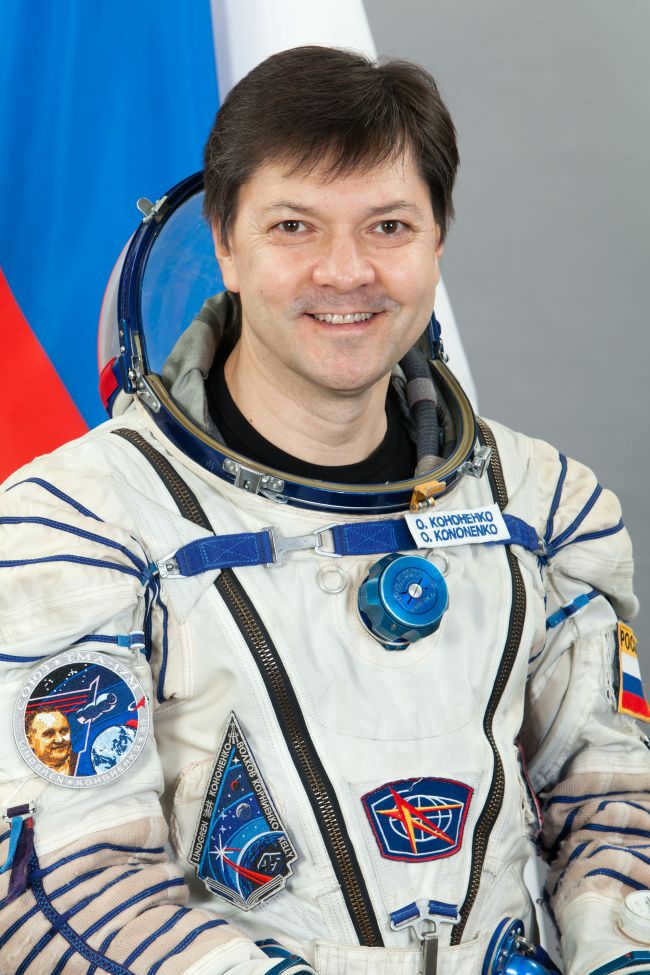
Oleg Dmitrievich was born in the city of Chardzhou, Turkmenistan, on June 21, 1964. He attended the local high school and also enrolled in art school at the age of ten. He successfully completed his art education in 1979. After finishing his secondary education two years later, he started working as an assembler at the local aviation technical base, where he was responsible for maintaining civilian aircraft.
Later on, Kononenko pursued higher education at the Aviation Institute of Kharkov and graduated in 1988, specializing in mechanical engineering for aircraft engines. He then joined the Progress rocket and space plant in Samara as an engineer, eventually working his way up to become a design engineer. The Progress plant was previously known as a design bureau.
In 1996, Oleg Kononenko completed special courses to further enhance his skills and knowledge in areas such as patenting and invention.
Training for Outer Space
Resources on the Subject
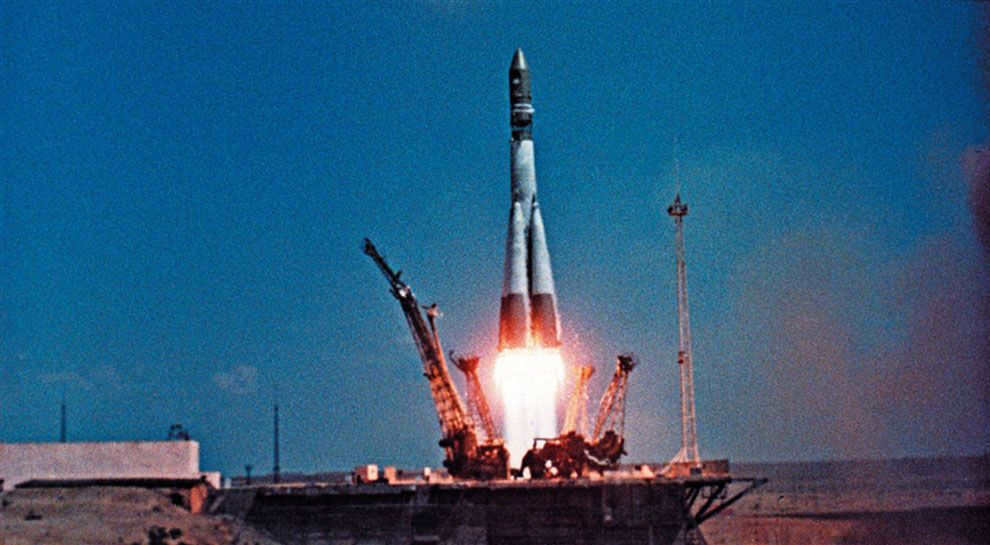
Oleg Dmitrievich was admitted as a cosmonaut candidate in 1996 after working at the design bureau. After undergoing extensive general space training for two years, he was officially certified as a “test cosmonaut” on March 20, 1998.
For the following decade, cosmonaut Kononenko was assigned to various missions, primarily related to the International Space Station (ISS). However, he was unable to directly participate in any of them. Throughout this period, he received training in different aspects of space exploration. This included simulations of emergency spacecraft landings in the Black Sea near Sevastopol and survival exercises in wooded areas with two other crew members.
Finally, in 2008, he was appointed as the flight engineer of the Soyuz-TMA-12 spacecraft and became a part of the main crew of the ISS.
First space mission
The inaugural space mission took place on April 8, 2008, when the Soyuz-TMA-12 spacecraft was launched from Baikonur. Commander Sergei Volkov and flight engineer Oleg Kononenko were joined by Lee So-young, South Korea’s first cosmonaut and a candidate of biotechnological sciences. During their time on the International Space Station (ISS), the team conducted various scientific studies. Additionally, Kononenko and Volkov performed a 6-hour spacewalk to carry out technical tasks. Later, Kononenko participated in a six-hour installation work on board the ISS.
The return journey to Earth took place on October 24, 2008, with cosmonaut Kononenko aboard the Soyuz TMA-12. In recognition of his challenging and hazardous scientific endeavors, he was honored with the prestigious title of Hero of the Russian Federation and awarded the medal “For Merits in Space Exploration”.
On December 21, 2011, the Soyuz TMA-03M spacecraft, commanded by cosmonaut Kononenko, embarked on a mission to the International Space Station (ISS). During his time on the station, Kononenko served as an on-board engineer and completed his third spacewalk, which lasted over six hours. After spending approximately 190 days in space, Oleg Dmitrievich safely returned to Earth.
Following his second space mission, Kononenko assumed the role of group leader within the cosmonaut squad, overseeing a team of seasoned astronauts. In 2013, he was promoted to deputy commander of the squad.
In preparation for future space endeavors, Oleg Dmitrievich underwent training on various spacecraft simulators and also participated in survival exercises in winter conditions, specifically in wooded and swampy areas.
Third space mission
On July 23, 2015, Kononenko, a 50-year-old astronaut, together with two other crew members, successfully docked the Soyuz TMA-17M spacecraft to one of the segments of the International Space Station (ISS) – the Rassvet research module. After spending 140 days conducting various experiments and fulfilling their mission objectives, the spacecraft undocked on December 11 and began its journey back to Earth.
Following this mission, Oleg Dmitrievich was honored with the Order “For Merit to the Fatherland” IV degree. He has also received numerous other awards, including recognition from NASA for his contributions to space exploration.
Continuation of Life
Presently, Kononenko, the former astronaut, is actively engaged in his leadership role at the Cosmonaut Training Center. In addition to his professional pursuits, he also excels in volleyball, having achieved 1st division status. Furthermore, he is happily married and is devoted to raising his two twin children.
Oleg Dmitrievich Kononenko (born June 21, 1964 in Turkmenistan) is a Russian and Turkmen cosmonaut. He has flown to the International Space Station on four separate occasions. Kononenko served as the flight engineer on the Soyuz TMA-12 spacecraft, the flight engineer and commander of the Soyuz TMA-03M spacecraft, the flight engineer on the Soyuz TMA-17M spacecraft, and the commander on the Soyuz MS-11 spacecraft. Throughout his career, Kononenko has spent a total of more than 736 days in orbit during his four long-duration missions to the ISS.
- 1 Personal life
- 2 Education
- 3 Awards
- 4 Experience
- 5 Cosmonaut career
- 5.1 Expedition 17
- 5.2 Expedition 30/31
- 5.3 Spacewalk
- 5.4 Expedition 44/45
Personal life
Oleg Kononenko was born on December 21, 1964, in Chardzhou, Turkmen SSR (now Turkmenistan), to a modest family. His father, Dmitry Ivanovich Kononenko, worked as a truck driver, while his mother, Taisiya Stepanovna Zhurakova, worked as a communications operator at Turkmenabat airport. Kononenko completed his education at secondary school No. 15 in Turkmenabat, where he excelled in Turkmen language studies.
Kononenko attended a specialized volleyball school and was a member of Turkmenistan’s youth national team.
He is married to Tatyana Mikhailovna Kononenko (née Yurieva) and they have a son named Andrey Olegovich Kononenko and a daughter named Alisa Olegovna Kononenko. In his free time, Oleg enjoys reading and participating in team sports.
Education
Oleg Kononenko faced some obstacles in his educational journey. When he initially applied to the Kharkov Aviation Institute, he was not accepted. Undeterred, he decided to return home and gain some practical experience. For a year, he worked in the tool shop of the aviation technical base at Turkmenabat airport. This experience not only allowed him to develop his skills but also provided valuable insights into the aviation industry.
After gaining this hands-on experience, Kononenko made a second attempt to enter the Kharkov Aviation Institute. This time, his efforts paid off, and he was accepted. In 1988, he successfully graduated from the institute, earning a degree in mechanical engineering. This educational background served as a solid foundation for his future endeavors in the field.
Accolades
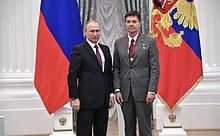
Oleg Kononenko, a native of Russia, is a recipient of the prestigious Hero of the Russian Federation title. He has also been honored with the Federation Medal and the Yuri Alexeyevich Gagarin Medal by the Russian Cosmonautics Federation.
Professional Background
After completing his education, Kononenko started his career at the Central Specialized Design Bureau of Roscosmos TsSKB-Progress in Kuibyshev. He began as an engineer and eventually progressed to the role of lead designer. In this capacity, he was responsible for designing, analyzing, and developing power supply systems for spacecraft.
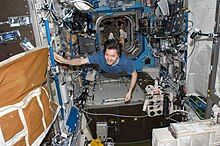
Oleg Kononenko completed a journey inside the Space Station Destiny Laboratory.
Oleg was chosen as a candidate for astronaut by the Interdepartmental Commission on March 29, 1996. From June 1996 to March 1998, he underwent astronaut training at the Gagarin Cosmonaut Training Center. On March 20, 1998, he was officially recognized as a test astronaut by the Interdepartmental Qualification Commission. In October 1998, Oleg joined a team of astronauts selected for the International Space Station (ISS) program.
Between December 2001 and April 2002, Kononenko underwent training as a backup flight engineer for the Soyuz TM-34 spacecraft, which was part of the third ISS visit mission. From March 2002 to February 2004, he received training as a flight engineer for the Soyuz TMA spacecraft and was part of the main crew. Between March 2004 and March 2006, Kononenko was part of a group of cosmonauts selected for the ISS program. In March 2006, he started training as a flight engineer for the Soyuz TMA-12 spacecraft and the Expedition 17 crew.
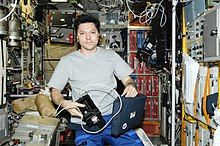
Oleg Kononenko, the Flight Engineer, carried out a test launch of SPRUT-2 in the Zvezda g service module.
Expedition 17
Kononenko served as the flight engineer for both the International Space Station mission and the Soyuz TMA-12 mission. The crew was launched on April 8, 2008, and safely returned on October 24, 2008. Kononenko spent a total of 199 days in space.
Upon returning to Earth, Kononenko landed along with Expedition 17 commander Sergei Volkov and spaceflight participant Richard Garriot. They touched down at 11:37 p.m. EDT, approximately 55 miles north of Arkalyk, Kazakhstan. After being transported by helicopter to the Baikonur Cosmodrome, they were then sent to Zvezdny Gorodok (Star City) in Moscow.
Expedition 30/31.
On December 21, 2011, Kononenko, Andre Capers, and Donald Pettit embarked on a journey to the International Space Station with the aim of joining the crew. Their arrival at the space station took place on December 23. The return to Earth occurred on July 1, 2012.
Spacewalker
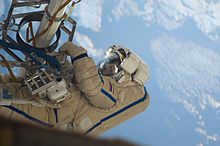
On February 12, 2012, Oleg Kononenko, the spacewalker, was seen outside the space station.
Kononenko had his first experience of spacewalk on July 10, 2008, as he went into space from the Pirs docking bay of the ISS airlock. Along with cosmonaut Volkov, he inspected their Soyuz TMA-12 spacecraft and retrieved a pyro charge from it. This spacewalk continued for 6 hours and 18 minutes.
On July 15, 2008, Kononenko exited the Pierce for a second spacewalk. During this spacewalk, Kononenko and Volkov performed one experiment and received another. They also continued to equip the station exterior by installing a docking target on the Zvezda service module. Kononenko wore a Russian Orlan suit with blue stripes for this spacewalk. The duration of this spacewalk was 5 hours and 54 minutes.
On February 12, 2012, Kononenko and his fellow astronaut Anton Shkaplerov had a planned six-hour spacewalk outside the International Space Station (ISS). Their tasks included the installation of protective shields on the Zvezda service module to safeguard against micrometeoroidal orbital debris, as well as the relocation of the Arrow 1 crane from the Pirs docking bay to the Mini-Research Module Search (MRM-2). Additionally, the two astronauts were responsible for installing struts on the ladder utilized by spacewalkers in the Pierce docking bay. As part of a future endeavor, they also deployed an experiment known as “Endurance” on the Search Mini research module. This experiment involves leaving two trays of metal samples on the surface of the Finder module.
Expedition 44/45
On July 22, 2015, Kononenko embarked on a mission to the International Space Station as the commander of the Soyuz spacecraft. He was accompanied by NASA astronaut Kjell Lindgren and Kimiya Yui of the Japan Aerospace Exploration Agency (JAXA) on the Soyuz-TMA-17M spacecraft. They spent a duration of five months on the International Space Station as vital members of the crew. In a remarkable feat, the trio safely returned to Earth on December 11, 2015, with their Soyuz TMA-17M landing gracefully in the vast steppes of Kazakhstan. Kononenko, having completed his third flight, accumulated a total of 142 days in space.
Expedition 58/59: A Unique Journey
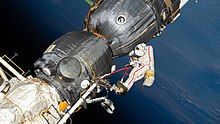
Kononenko embarked on a space mission to examine the external structure of the Soyuz MS-09 spacecraft, which was positioned on the Strela crane on December 11, 2018.
Kononenko was selected as the commander of the Soyuz MS-11 and launched to the International Space Station (ISS) for the fourth time on December 3, 2018. Originally assigned as the flight engineer and spacecraft commander, Kononenko had to assume the additional role of Expedition 58 commander due to the unsuccessful launch of Soyuz MS-10 on October 11, 2018. Consequently, Alexey Ovchinin, the original Expedition 58 commander, could no longer join the mission. This led Kononenko to command both Expedition 58 and Expedition 59. Expedition 58 commenced on December 20, 2018, when the Soyuz MS-09 spacecraft departed from the ISS. After spending 203 days, 15 hours, and 16 minutes in space, Kononenko, along with fellow crew members Anne McClain and David Saint-Jacques, safely returned to Earth on June 24, 2019.
Kononenko will always cherish his time spent in his native country of Turkmenistan. On December 31, 2018, Kononenko proudly displayed the flag of Turkmenistan and presented the book “Turkmenistan – the Heart of the Great Silk Road” by Gurbanguly Berdimuhamedov to the world from the International Space Station. From orbit, he wished a Happy New Year to all the citizens of Turkmenistan. The astronaut also expressed his deep affection for the country where he was born and raised, and expressed his pride and happiness for its accomplishments.
Honors and awards
- Recipient of the Hero of the Russian Federation award (February 5, 2009) – in recognition of exceptional bravery and heroism demonstrated during a space mission.
- Recipient of the Medal “For Merits in Space Exploration” (April 12, 2011) – for outstanding accomplishments in the field of research, exploration, and utilization of outer space, as well as for many years of dedicated and conscientious work, including involvement in social activities.
- Recipient of the Presidential Order “Zvezda” from Turkmenistan (February 16, 2009) – awarded in appreciation of valuable services rendered to the Government and people of Turkmenistan, for displaying personal courage, professionalism, and notable achievements in the execution of international programs aimed at peaceful space exploration.
- Designated as a Pilot-Cosmonaut of the Russian Federation in 2009.
- On February 24, 2011, he was awarded the title of Honorary Citizen of the city of Gagarin, located in the Smolensk region. This recognition was given to him in recognition of his years of expertise, profound sense of personal responsibility, remarkable ability to navigate complex situations, and make the right decisions. His unwavering devotion to his country and his commitment to continuing the legacy of Yuri Gagarin’s stellar achievements were also acknowledged.
- In 2008, he was honored with the NASA Medal for Distinguished Public Service in the United States.
- Additionally, he received the NASA Spaceflight Medal in 2008, further highlighting his remarkable contributions and achievements in the field of space exploration.
This article contains content that is in the public domain and sourced from websites or documents belonging to the National Aeronautics and Space Administration (NASA).
Additional resources
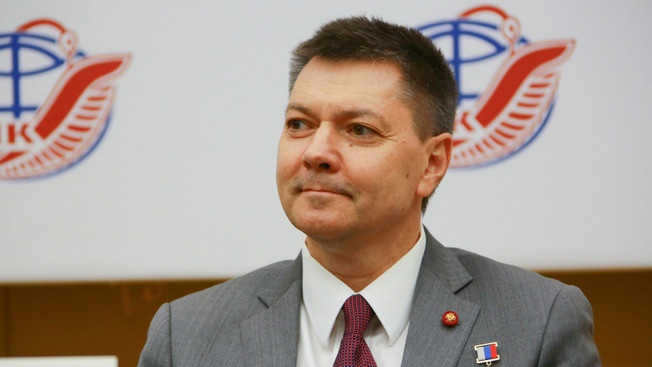

April 12 has held a special place in the history of our country since 1961. Although I was too young to remember, the joy that people felt 59 years ago when Yuri Gagarin embarked on his journey into space is well-known. Every year on this day, regardless of the events occurring in our country or the world, we honor those individuals whose achievements are unparalleled. This is not meant to be grandiose, as only the stars themselves can surpass their accomplishments.
Today, April 12, when the entire globe is gripped by the fear of the coronavirus, is no different. Astronauts are carrying out their duties in orbit as usual, while here on Earth, the team continues to prepare for new explorations of outer space.
Biography
Oleg Dmitrievich Kononenko, born on June 21, 1964 in Chardzhou, Turkmen SSR, is a renowned astronaut. After completing his studies at the Institute, he dedicated his career to designing electrical systems for spacecraft at the Central Specialized Design Bureau in Kuibyshev (Samara). This marked the beginning of his journey into the realm of space exploration.
Joining the prestigious cosmonaut squad in March 1998, Kononenko has since made significant contributions to the field. He has accumulated an impressive record, having completed four missions in orbit with a total flight duration exceeding 736 days. Additionally, he has ventured into outer space on five separate occasions, further solidifying his expertise.
Recognizing his exceptional skills and leadership qualities, Kononenko was appointed as the Commander of the cosmonaut squad in November 2016, a role he continues to excel in.
– Oleg Dmitrievich, as we celebrate Cosmonautics Day amidst the 60th anniversary of the Soviet-Russian squad of cosmonauts, there are still many untold stories and lesser-known details about space exploration. Can you share some of these hidden gems with our readers?
– Because it is improbable that I will fulfill the curiosity of all your readers, and there will be some undisclosed information, I will confine myself to providing general statistics. To start with – a couple of minor but necessary explanations. The designation of Cosmonautics Day was initiated through a decree issued by the Presidium of the Supreme Soviet of the USSR in 1962, in commemoration of the inaugural manned space voyage. Six years following, during the General Conference of the International Aviation Federation, it was determined that April 12 would be observed as the Global Day of Aviation and Astronautics.
The recruitment process for the initial group of astronauts, established on March 7, 1960, lasted until mid-June. This group consisted of twenty individuals, but only twelve of them had the opportunity to venture into space due to different circumstances. Leading the first squadron was Nikolai Kamanin, a pilot and Hero of the Soviet Union, renowned for his heroic rescue of the Chelyuskinites.
Source
Boris Valentinovich Volynov, the sole surviving member of the original cosmonaut squad and a two-time Hero of the Soviet Union, will celebrate his 86th birthday in December. From 1983 to 1990, he served as the leader of the cosmonaut squad.
In the early part of this year, a total of 283 individuals in our nation achieved the “pilot-cosmonaut” qualification, with 122 of them completing 264 spaceflights that lasted a combined total of over 28,000 days. In total, four representatives of our country have spent a cumulative six times working in space.
There is another notable individual who deserves special recognition. Over the course of 59 years of manned space exploration, a total of 66 Soviet and Russian experts have ventured into outer space. This remains one of the most challenging aspects of orbital work. Since 1961, 72 cosmonauts have been honored with the prestigious title of Hero of the Soviet Union, with 49 of them earning the title of Hero of the Russian Federation. Boris Morukov, a Doctor of Medical Sciences who has unfortunately passed away, was bestowed with the title of Russian pilot-cosmonaut for his voyage aboard the American manned spacecraft Atlantis STS-106.
– Are there any significant differences between the selection process for the squadron in the past and present? Is it accurate to say that there has been a noticeable decline in the number of individuals aspiring to become cosmonauts compared to 60, 40, and even 20 years ago?
– The selection process for astronauts remains consistent, with individuals who possess higher education, work experience in the rocket and space industry or research institutes being chosen. These individuals must also exhibit physical resilience, moral stability, and the ability to perform in extreme conditions. It is important to emphasize the significance of the last three qualities, as they have proven to be essential time and again.
It is a misconception to believe that only superhumans are involved in space exploration. In reality, it is regular individuals who engage in these endeavors. Yuri Gagarin expressed this sentiment during his time, and I wholeheartedly agree with him, with a slight amendment: astronauts are ordinary people who possess exceptional qualities. They are not only strong, courageous, intelligent, enduring, and determined, but also humble, communicative, compassionate, and kind.
During my time in high school, the popular choices were hockey players, cosmonauts, and Tsiolkovsky.
However, the world has drastically changed since then.
Nowadays, the favorites are show stars, oligarchs, and Zhirinovsky.
Nevertheless, it is important to acknowledge that the nature of missions and their objectives have also evolved. The duration of orbital stays has significantly lengthened. As a result, the selection criteria for astronauts have shifted towards factors such as their education, professionalism, years of work experience, eagerness to continuously improve, and ability to sustain life and work in confined spaces for extended periods of time.
Therefore, individuals who aspire to be astronauts are not just experts who have already established themselves in their respective fields, but also have a clear understanding of the consequences that come with their decision. I can confidently state that being a cosmonaut is not just a job, but rather a way of life.
– The initial group of cosmonauts, as you may be aware, was formed by the order of the Commander-in-Chief of the Air Force and was comprised solely of military pilots. What is the current approach to selecting candidates for the program and how willing is the Air Force Command to entrust its top pilots to the Cosmonaut Training Center?
– Since 2015, the Yuri A. A. Cosmonaut Training Research and Test Center has been engaged in cosmonaut training. The Gagarin Space Center, along with all its departments, including our unit, has been transferred to the Roscosmos State Corporation. This is a completely civilian organization. In the past five years, Roscosmos has conducted two nationwide recruitment drives for cosmonauts. Any Russian citizen, including military personnel, is eligible to participate in this selection process. If they successfully pass the commission, they are admitted to the cosmonaut team based on general criteria. For example, during the most recent recruitment in 2018, four servicemen were selected for the squad, and the military department did not impose any obstacles on their path.
Reference
The initial group of astronauts was exclusively made up of military pilots. There were nine individuals from the Air Force, six from air defense, and five from naval aviation. Currently, there are 32 members in the astronaut team.
– Can individuals from former Soviet republics be included in the Russian astronaut team today, as was the case during the Soviet era?
– No, we only accept Russian citizens. The selection, training, and missions of individuals from former USSR republics are handled by the State Corporation.
– What message or wish would you like to convey to everyone involved in today’s celebration?





